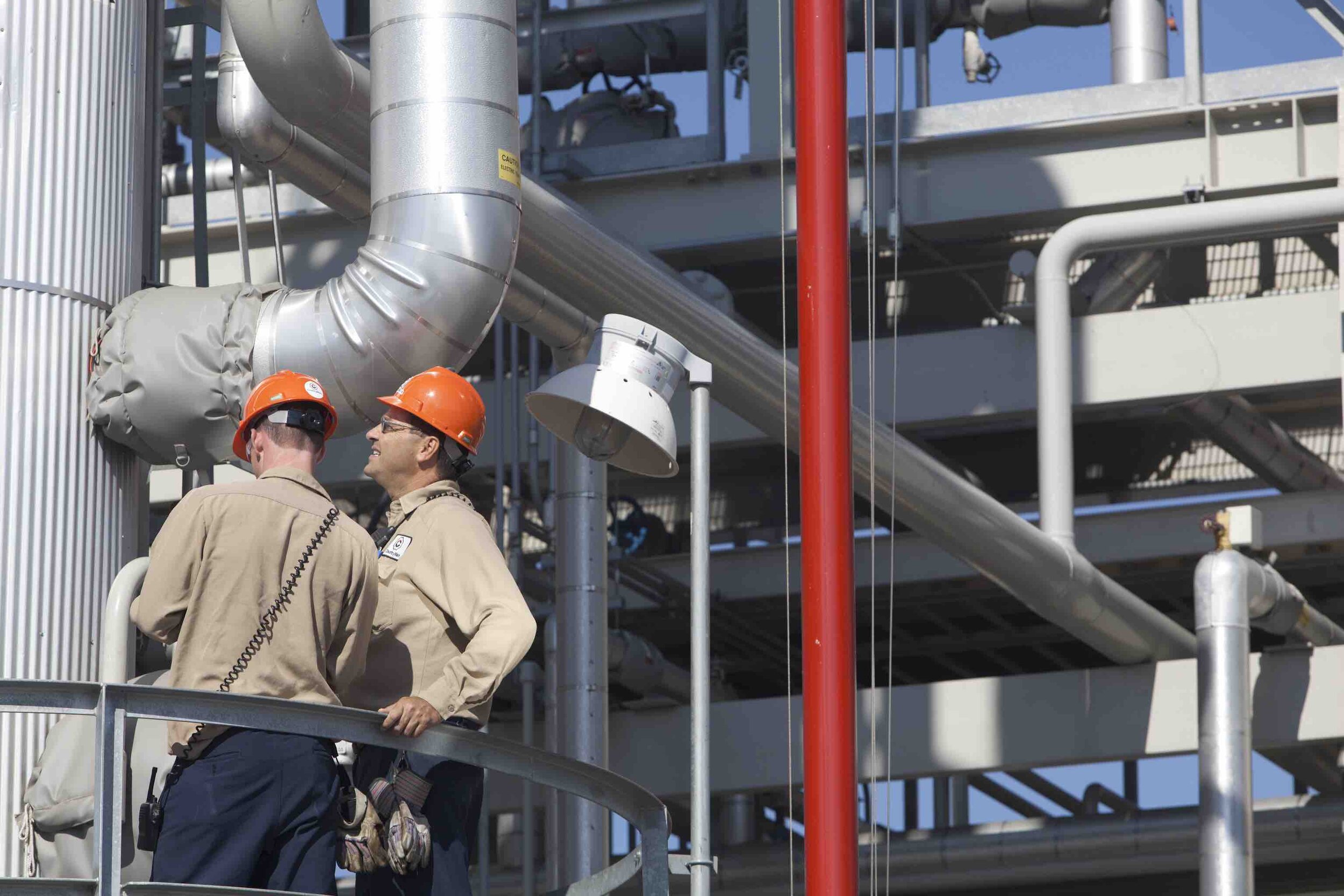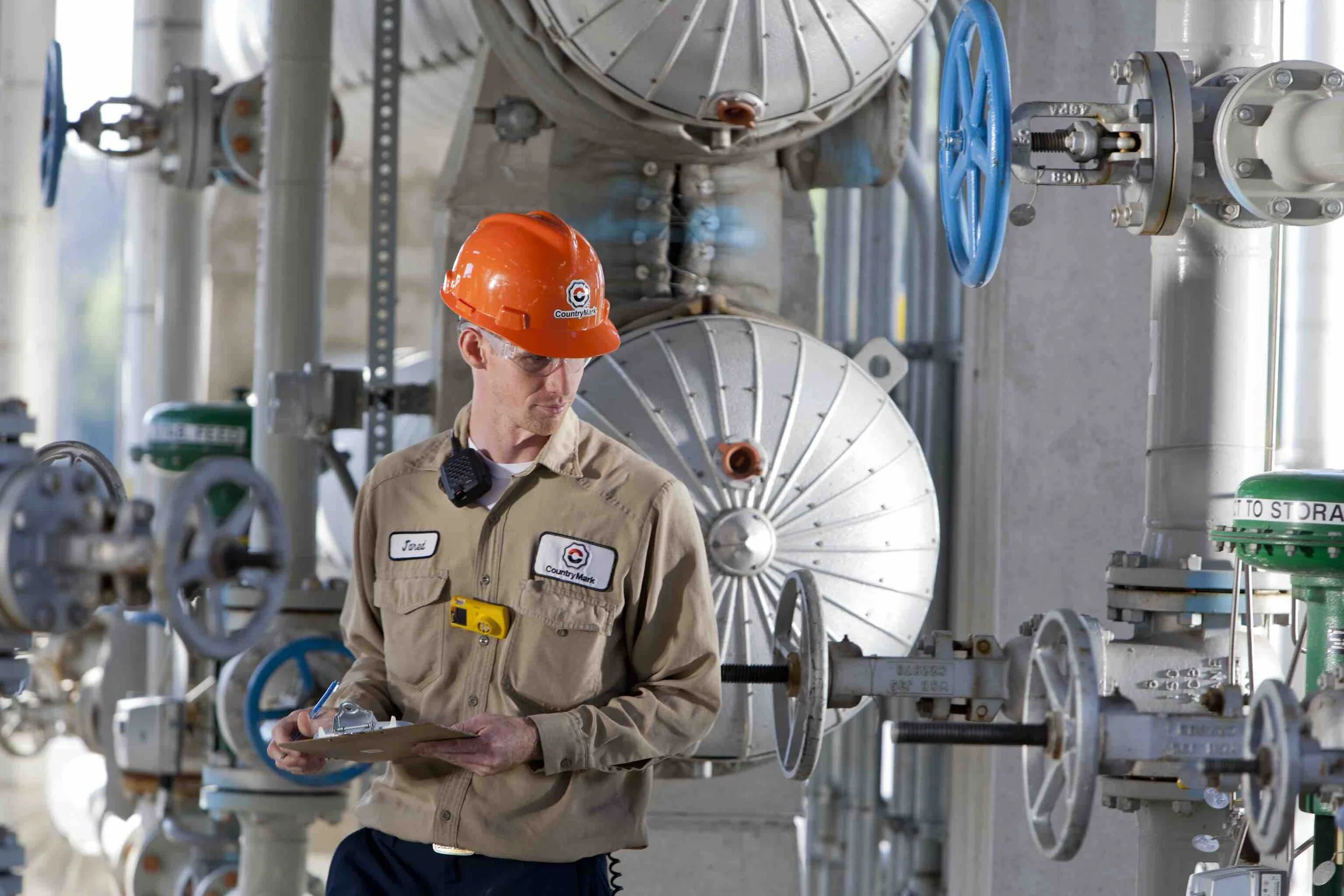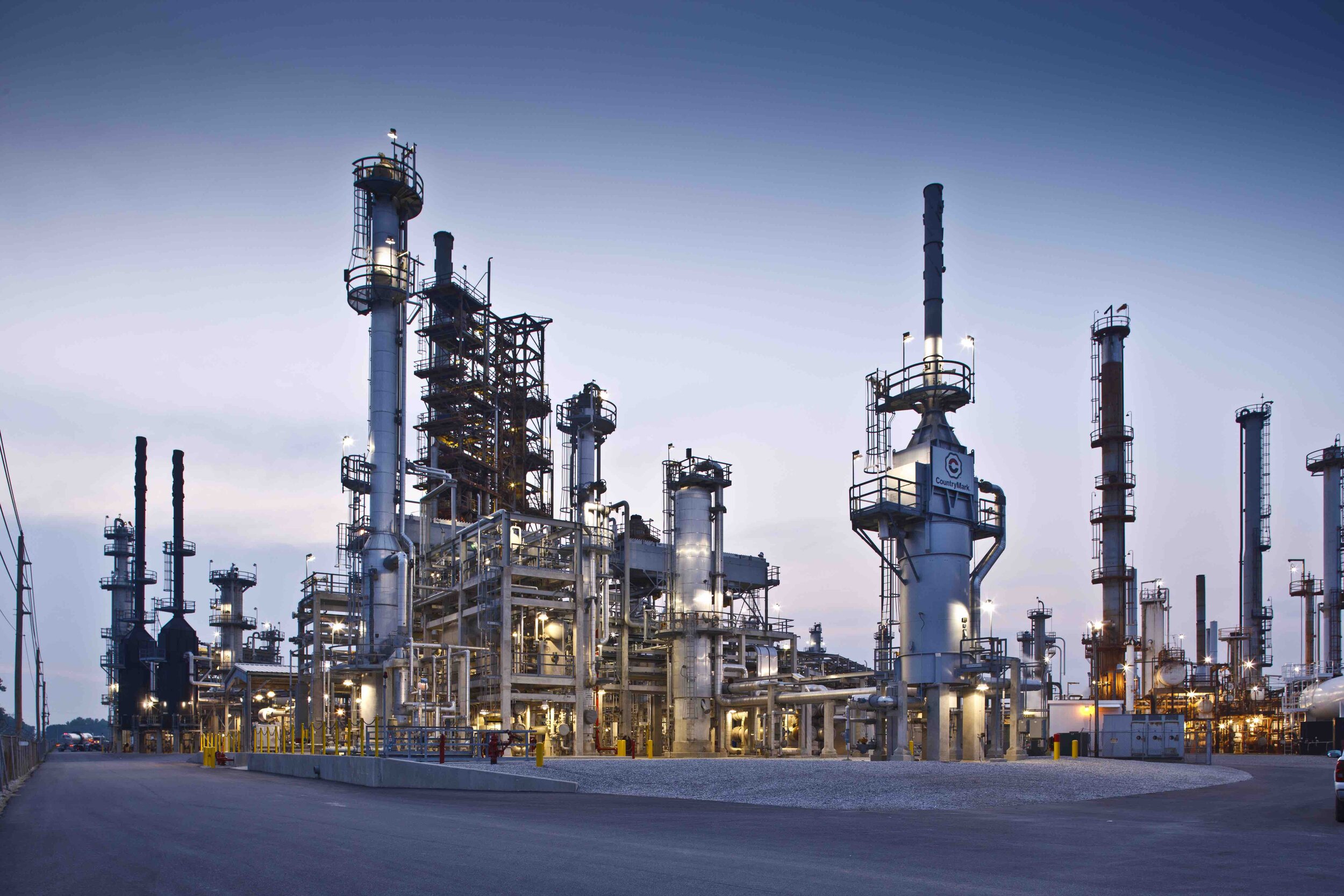Closing the Manufacturing Talent Gap in the Oil and Gas Industry
/As the reliability engineer for CountryMark, Cody David represents the new generation in an industry that continues to face the challenges of an aging workforce—he does his part to help to close the manufacturing skills and talent gap.
By Michelle Segrest, Navigate Content, Inc.—Reporting for Pump Engineer, ValveWorld, and Valve World Americas




With a decade of rotating equipment experience, Cody David works hard every day to do his part to help close the talent gap. He accomplishes this by soaking in the knowledge of those who came before him and applying the lessons learned in every project he tackles.
With more than 600 pumps in CountryMark’s refinery and thousands of valves, Cody and his team must apply best practices and preventive maintenance to keep the machines running in a market in which survival depends on high production and superior efficiency.
Cody always knew his career path would involve working with mechanical equipment. He grew up tinkering with cars, bikes, and tractors. After graduating with a mechanical engineering degree in 2008 from Rose-Hulman Institute of Technology in Terre Haute, Indiana, he worked for Peerless Pumps, a Grundfos brand, as a Lean Six Sigma black belt. His primary responsibility was working to assemble pumps and other equipment with the goal of minimizing lead times and increasing the efficiency of the manufacturing plant.
This taught him about the value of reliability and led him on the path to his current position as reliability engineer at CountryMark.
CountryMark is an American-owned oil exploration, production, refining and marketing company. It is the largest buyer of Illinois Basin crude oil, which is sourced from the oil fields of Illinois, Indiana, and Kentucky. The oil is then refined to the highest specifications at the CountryMark refinery in Mount Vernon, Indiana.
Fuel quality is protected as it travels north along a 238-mile private pipeline. State-of-the-art blending technology at each CountryMark fuel terminal ensures that biodiesel and ethanol blended fuels are formulated for optimal driving performance and winter operability.
CountryMark also produces a complete line of high quality lubricants, and it carries API-certified TerraCair Diesel Exhaust Fluid (DEF). CountryMark fuels, lubricants and DEF are delivered daily to farms, fleets and families across the Midwest, and are available at more than 100 CountryMark-branded fueling stations. More than 65 percent of Indiana farmers and 50 percent of Indiana school corporations are powered by CountryMark fuels.
CountryMark’s upstream business includes a team of petroleum exploration professionals, geologists, production engineers, drilling specialists and reservoir managers. CountryMark’s oil exploration and production group manage 1,400 oil wells in six states producing 3,500 barrels of oil per day.
The CountryMark refinery processes 30,000 barrels of local crude oil per day, operating 24 hours per day, 365 days per year. The CountryMark refinery brings to the market 450 million gallons of finished fuel products per year.
Closing the Manufacturing Skills Gap in the Oil & Gas Industry
While working for the pump manufacturing company, Cody was responsible for the techniques and processes involved in building and assembling the equipment. With CountryMark, he focuses on how to use the equipment and get the most life from the refinery’s more than 10,000 assets.
Cody said he doesn’t really have a typical day of work. Each day offers new challenges. About 25 percent of each day is spent working on major capital projects and turnarounds. For example, his team has process safety management items or insurance projects that update older equipment to current standards. This is crucially important at the 75-year-old facility.
The rest of his day is spent working on overhauls and revamps to ensure that more capacity flows through the plant. He is part of the reliability group, which is a team that includes four engineers (two rotating equipment, one electrical, and one stationary). Cody works closely with the operations units, operators in the field, pump shop supervisor and technicians, and a pump shop maintenance planner. He also works closely with the process engineering team.
“With the process engineer, we may look at a specific pump to see if it is meeting the demand, whether it’s flow or discharge pressures,” Cody explained. “We look at suction pressures. We check what we are pumping and then look at specific gravities and vapor points of the product. The next step is working with operations to understand if they see any bad actors and to determine any troubles they are having, like vibration or seal failures. I also work with the maintenance team to understand challenges and problems they are having with the equipment.”
Cody then takes all this information to the reliability team to determine the source of any gaps in the performance standards of the pumps, valves, motors, seals, and all other components of the system.
The most challenging part of his job is also the most enjoyable, he said.
“Information is king,” he said. “You can’t fix anything if you don’t know what you are looking at. We have a lot of equipment that goes all the way back to the 1940s, and we have some brand new equipment. We could have all the information from the OEM, or we could only have the nameplate. Understanding what you are working with can be a big hurdle. We have to be investigators a lot of the time. We find ourselves asking questions like, ‘When was the pump built? What style of impellers are in it? Does it have a mechanical seal? What kind of mechanical seal?’ If you don’t have this information, it is tough to pinpoint what you are dealing with and can be very difficult to make repairs.”
Tackling Challenges with Valve Maintenance at an Oil Refinery
CountryMark has slop wax pumps that sit one tray above the asphalt off of the vacuum column. The tray must maintain a certain level so that the light products are able to continue moving upward. If the tray floods, the light products can mix in with the asphalt.
“We had a major problem with this pump because it cavitated like crazy,” Cody explained. “We found that instead of holding the level with a control valve, we were trying to hold a discharge pressure with an isolation valve. This seems very simple, but we decided to open the discharge isolation valve all the way, and then let the control valve hold the level where we wanted it. By focusing on the discharge pressure, we actually were flowing too much or not enough and the level could not be maintained. Now we can maintain level in the tray and increase our NPSHa (Net Positive Suction Head available).”
Manufacturing Maintenance Best Practices at an Oil Refinery
CountryMark incorporates preventive maintenance best practices with regard to taking care of the pumps and valves, and other equipment.
“The most important thing for an isolation or gate valve is to ensure they are installed with the stem oriented so that the gate cannot fail in a closed position, or fall off of the stem,” he explained. “If you have the stem of the valve installed vertically in a horizontal line, the gate can fall off of the stem and no longer be controlled by the stem. So we orient that at three and nine-o’clock positions on a horizontal.”
Cody said material selection is critical for maintaining valves. He recommends ensuring that the right valve is in the right piping system. “For example, if you are above 450 degrees on a crude line, make sure you have a high chrome valve so that there is no sulfidation. This is what happens when the product slowly corrodes and erodes. If you have a carbon steel valve in a sulfidation environment, you won’t have much left in the end.”
All of the valves are specified based on the piping specifications, Cody said. There are pipe specifications for each unit, depending on pressure and temperature.
Cody said to take care of the wear parts on valve—the gate, the packing, and the stem. Ensure the packing bonnets can be replaced. If there is a bad actor, or harsh environment, replace the valves regularly. Most of the valve maintenance at CountryMark happens during shutdowns or turnarounds.
For pumps, these are some items on Cody’s preventive maintenance checklist:
Try to have at least 10 diameters of straight run to the pump.
Perform regular alignments before each startup.
Perform bump checks to ensure it stays in the right rotation.
Make sure you have the right pump in the right application.
Check straight line into the pump.
Check to ensure the foundation has no cracks.
Since seals represent the number one failure in the pumping system, be sure to have a seal maintenance plan.
At least once a year, change the oil, check alignment, and check couplings.
Perform monthly vibration rounds.
Check radial and axial vibrations on pumps and motors..
“The best preventive maintenance happens before the equipment ever turns on,” Cody explained. “Once the equipment is running, we have predictive maintenance checks, like checking the oil, seals, and vibration levels. But true preventive maintenance happens before the equipment is ever ordered.”
In oil and gas, the pumping system handles corrosive, abrasive, and even explosive materials, which makes preventive maintenance even more important.
The Drive Toward Reliability in the Oil & Gas Industry
A vital benchmark in the oil and gas industry is availability. CountryMark ranks high in this category worldwide as one of the most available facilities from an equipment standpoint. But this didn’t come without a lot of hard work and a focused program designed to improve efficiency.
With about 10,000 equipment assets, CountryMark developed and launched a WorkPlace Excellence Program, in which its leadership became fully invested.
Proactive and preventive maintenance training began several years ago with consultants from Life Cycle Engineering (LCE) assisting with the program. Coaches were brought in to train leaders on four focus areas.
Operations Improvement
Work Management
Reliability Engineering
Materials Management
Two systems were targeted for replacement or an upgrade. The CMMS system needed to be replaced. An upgrade of the financial management system was needed. The enterprise system existed, but it needed an upgrade to accommodate the new maintenance management system software interface and inventory module.
The first step was preparing the organization for the change with extensive training and multiple teams defining the work process in the four focus areas. In addition to key skills training, the teams included a combination of planners, craftsmen, frontline supervisors, maintenance managers, warehouse workers, and operators who were all involved in mapping out more than 30 new work processes.
Cody drove the reliability engineering piece of the puzzle. A new focus on history documentation, root cause analysis, condition monitoring, enhanced work processes, and materials management made major impacts with improving the reliability of the equipment and the facility.
Oil and Gas Industry Trends
From a broad perspective, Cody said new technology will drive the oil and gas industry, particularly with developments of magnetic drive pumps. Vibration analysis tools, laser alignment, data collection machines, and other preventive maintenance tools have developed dramatically in recent years, which will also have a positive impact on the industry.
The issue of the aging workforce continues to be a topic of conversation. With an experienced generation of skilled workers retiring, the newer generation must close the talent gap.
“I heavily rely on the generation that came before me, whether they are CountryMark employees or vendors,” Cody said. “We had two technicians and one pump shop manager retire recently, and this caused us to lose a wealth of information just because those guys are no longer here day-to-day. The biggest piece of advice I would give to anyone coming into this field is to not be afraid to ask questions. There are no dumb questions. Ask as many questions as you can from the people who have been here before and learn from their stories and how they have solved problems in the past. For example, just because something is old, it doesn’t mean it’s worn out. These guys have worked with equipment from the ‘30s and ‘40s and know all kinds of tricks of the trade. Listen to them and learn from them.”
Cody also draws inspiration from long-time rotating equipment expert, Heinz Bloch, who preaches, “If you are not learning every day, you are being left behind.”
“I’m very grateful that he was able to record and teach his knowledge and leave it for a new generation to follow,” Cody said.
Michelle Segrest is President of Navigate Content, Inc., a full-service content creation firm. She has been a journalist for more than three decades and specializes in covering the people and processes that make a difference in the industrial processing industries. Contact her at michelle@navigatecontent.com















